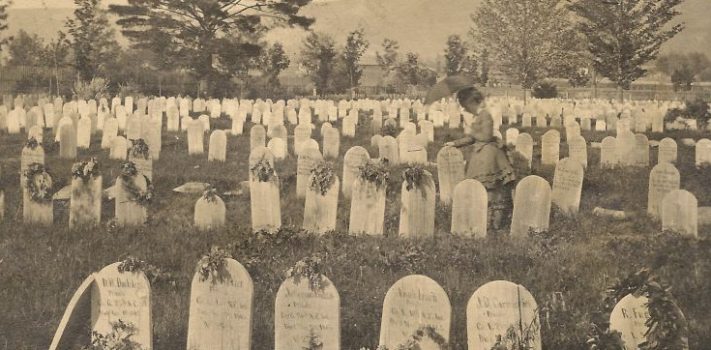By proclamation of General John A. Logan of the Grand Army of the Republic, the first major Memorial Day observance was held on May 30th, 1868 to honor those who died “in defense of their country.” Known to some as “Decoration Day,” mourners honored the Civil War dead by decorating their graves with flowers. On the first Decoration Day, General James Garfield made a speech at Arlington National Cemetery, after which 5,000 participants helped to decorate the graves of the more than 20,000 Union and Confederate soldiers buried in the cemetery.
The 1868 celebration was inspired by local observances that had taken place in various locations in the three years since the end of the Civil War. In fact, several cities claim to be the birthplace of Memorial Day, including Columbus, Mississippi; Macon, Georgia; Richmond, Virginia; Boalsburg, Pennsylvania; and Carbondale, Illinois. In 1966, the federal government, under the direction of President Lyndon B. Johnson, declared Waterloo, New York, the official birthplace of Memorial Day. They chose Waterloo–which had first celebrated the day on May 5, 1866–because the town had made Memorial Day an annual, community-wide event, during which businesses closed and residents decorated the graves of soldiers with flowers and flags.
—
Today we present a book review that is not part of the judging for Round 94 of the SurvivalBlog non-fiction writing contest.
Round 95 of the contest begins on June 1st, so get busy writing and e-mail us your entry. We are currently short of articles in the queue, so this will increases your chances of winning a prize in Round 95. Remember that there is a 1,500-word minimum, and that articles on practical “how-to” skills for survival have an advantage in the judging.










